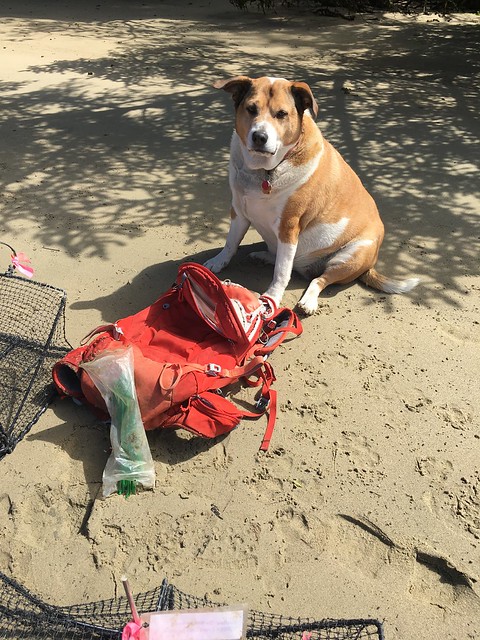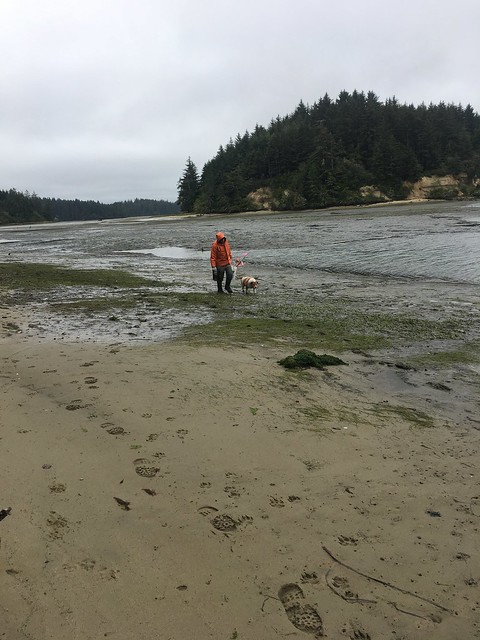July has passed in a blur, and it’s somehow already August, with only four weeks left in Oregon. I’ve had–during the Sea Grant camping trip to the Tamolitch blue pool, and Crater Lake National Park—which I’ll hopefully get to in another blog post. This week, though, I wanted to give an update on the green crab work numbers in Coos Bay since they were first found in 1998. Last year, a total of around 200 crabs were caught throughout all of Coos Bay, including in South Slough. So far this year, more than 1,500 crabs have been caught in the estuary.
Before getting into more detail, I want to explain a technicality that makes understanding the data easier. We use something called Catch Per Unit Effort (CPUE) for our measurement of crab abundance as a way to standardize crab numbers. CPUE is calculated by dividing the total number of crabs caught by the number of traps set. In this way, we can control for the number of crabs by the trapping effort. If we used just abundance numbers (like the 200 crabs caught in 2016 and 1,500 in 2017) to compare between sites or between years, our values might be impacted by the fact that we set a different number of traps at each site or year. Using CPUE allows us to more directly compare crab abundance.
So, back to the data. Luckily for the South Slough, the drastic increase in green crab abundance seen in Coos Bay has been almost entirely restricted to the upper part of the Coos Bay and not in the South Slough specifically. While a couple sites in South Slough have seen a CPUE increase of about 0.5—1 crabs/trap, a couple other sites in the South Slough have actually decreased by about the same amount compared to last year. In the other side of Coos Bay, though, the CPUE has increased by 15 crabs/trap/day—more than a 600% increase!
The map below shows the change in CPUE across all sites in the different parts of the Coos Estuary. The triangles show where green crabs were present in 2016. You can see from the colored circles that the Upper Bay has seen a much higher increase in CPUE than the South Slough.
Because of the massive increase in green crabs this year, we are trying to get the word out to the community. I have encountered people a few times while out doing fieldwork that ask questions about what we’re doing, which provides a great opportunity to share about green crabs and let them know about the issue. We’ve printed flyers that we can hand out to the community with information on how to identify green crabs, why they are a problem, and what to do if they are found. I am going to continue outreach about green crabs by updating the information flyer and distributing them around.
The human community members we’ve encountered have been great to talk to, but the dog community members have been even better. One of our field sites has two dogs that have joined us every time we’ve been there. They live in a house somewhere behind our field site, but I’m not exactly sure where, because every time we are there they just come running down the hill through a patch of forest behind the beach and join us for crab trap setting.
A good dog:
Also a good dog:
They are really helpful workers and will be great scientists someday 12/10






That’s a chunker of a pup if I’ve ever seen one.
Thanks for taking the time to explain CPUE so that we can accurately understand the data! Looks like you know a thing or two about science communication, which I’m sure comes in handy as you spread the word about green crabs to the community. Loving those dogs – I agree with Meagan, that one is quite the chubster.
Love the embedded videos! Looks like you are in the thick of it in the Slough, and getting some great data for the larger green crab monitoring effort. Field dogs are the best dogs; I’d even say 13/10…